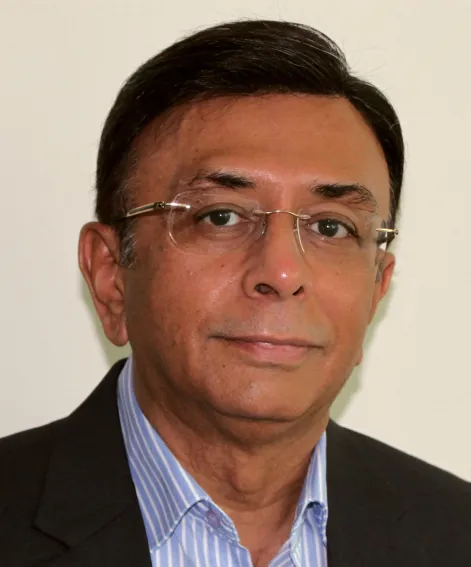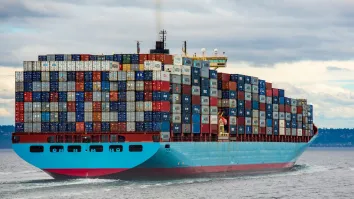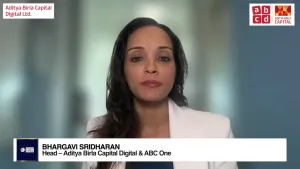
Fiserv's Rajiv Madane talks of mobile banking, security threats, and cashless solutions in Asia
What solutions are rolled out in Singapore, Thailand and Indonesia?
Asian Banking and Finance recently caught up with Rajiv Madane, director, product & strategy, core banking, risk & compliance and payment networks, ASPAC at Fiserv, to know more about Fiserv's operations in the region and his outlook on the development of mobile banking solutions in Asia.
ABF: Please tell us about Fiserv's operations in Asia-Pacific. Who are your largest or most notable clients in the region, and what solutions have Fiserv provided for these firms?
Singapore is the hub for Fiserv operations in Asia-Pacific, and we have a strong presence in Australia and New Zealand. Fiserv offers solutions for core banking, customer and channel management, payments,and risk and compliance, among others. We have a diverse range of clients in 13 countries across the region who leverage our expertise to help them meet their customers where they are and enhance the way they live and work today.
Our footprint in Asia for core banking extends to China, Philippines and Sri Lanka. Westpac Australia and Bangkok Bank have each won awards for their online and mobile banking offerings that utilise Fiserv technology. In Australia, we provide remote image capture solutions for two of the big fourbanks, serving close to 80 percent of the cheque processing market. Several global financial and insurance institutions use our fraud and anti-money laundering solutions for fraud monitoring, detection and reporting.
ABF: Based on Fiserv's experience, what do you think are the biggest mobile banking trends which will emerge in Asia the medium-term?
KPMG estimates that the number of mobile banking users will double to 1.8 billion by 2019, with Asia being a major driver of this growth. As this mobile market grows, we expect the major trends to revolve around ease of payments and integration of functionality.
Mobile payments include NFC-based payments at merchant sites, P2P (person-to-person), P2B (person-to-business) and P2G (person-to-government) payments and incorporating e-commerce and payment buttons into social media apps. Enhanced functionality in these areas will make it easier for people to make payments how and when they choose.
We also anticipate more geo-location services incorporated into mobile banking apps and increaseduse of actionable mobile alerts. There will be growing expectations of the types of functionality that can be accessed from the mobile device - application, calculation, approval and purchases for services in investment, loans, insurance and retirement.
ABF: There is a wide disparity between mobile banking adoption rates in the region: First-world economies like Singapore and Australia have extremely high adoption rates, while other economies are still striving to get more banking customers online. What are the biggest hurdles when it comes to implementing financial technology solutions in the region?
Mobile banking adoption rates often fluctuate based on the maturity of the mobile phone market and subsequent smartphone penetration. Singapore and Australia have high adoption rates because most of the users have had smartphones for years and are tech savvy. Other economies do not have high mobile banking adoption rates because people in many of those economies are just getting their first smartphones. We would expect adoption rates to increase in these markets over the coming years.
Countries like Thailand, Indonesia and Vietnam are catching up and have been quick to adopt mobile technology. In any country, connectivity infrastructure and ease of application are essential for adoption. One of the greatest market opportunities in Asia is serving the needs of the “unbanked” due to the limited access they have to branches – and this may require support for basic mobile banking on feature phones rather than smartphones.
The biggest hurdles for user adoption of fintech solutions in the region are pace of launches and related education and awareness. The recent GSMA intelligence report shows that two billion people in Asia are covered by mobile broadband services, but are not using them. While banks are rolling out apps, features and functions quickly in the region, the average person on the street is often still trying to understand how to use the basic functions of a smartphone.
In addition, for many customers, unless someone (friend or family) shows them how to use the mobile banking solution, the chances of them using mobile banking are very low. In this situation, introducing people to the service and educating them about it are essential.
ABF: Security risks are rising in tandem with the increased use of credit and debit cards in the region. What are the biggest security threats that haunt Asian banks, and consumers by extension?
Increases in financial activity and technology will inevitably lead to an expansion in security threats, so it is important that any institution has a robust security strategy and the technology needed to support it.
The biggest threats in the Asian market currently remain phishing, hacking and malware. Phishing and malware take on many different forms, which make them hard to recognise and detect.
Some malware have reached levels of sophistication that they are difficult to search and destroy. In the meantime, hackers have moved away from traditional credit card fraud and are leaning towards identity and data theft as online activities continue to thrive.
ABF: What's your take on the rise of cashless solutions across Asia?
Cashless solutions are being promoted by country level initiatives across the region and many central banks are issuing directives to banks and industry associations to move to a cashless environment. Thailand recently embarked on the PromptPay project to promote cashless transactions across the economy, Singapore has launched Mobile Digital ID and Indonesia has issued a directive for a less cash society.
As the fintech industry fills in niche areas where traditional banks have left gaps, we are seeing many initiatives that provide opportunities for cashless solutions. These include mPOS solutions, contactless payments, e-commerce payments, blockchain-based P2P transfers, and tokenisation technologies. Going forward, we expect more and more of the cashless solutions to enter mainstream business and reduce the reliance on cash.


















 Advertise
Advertise




